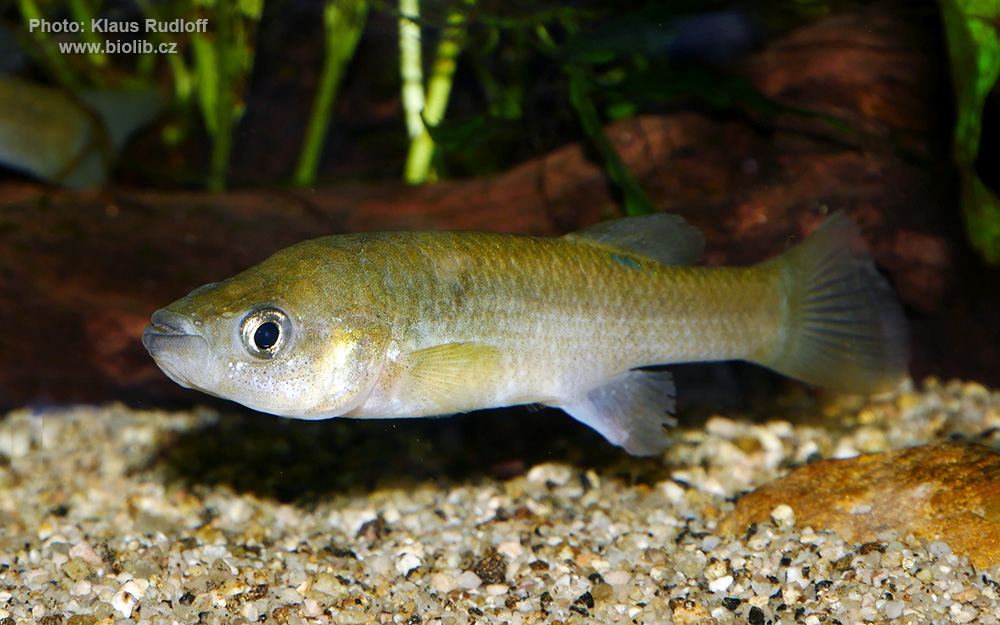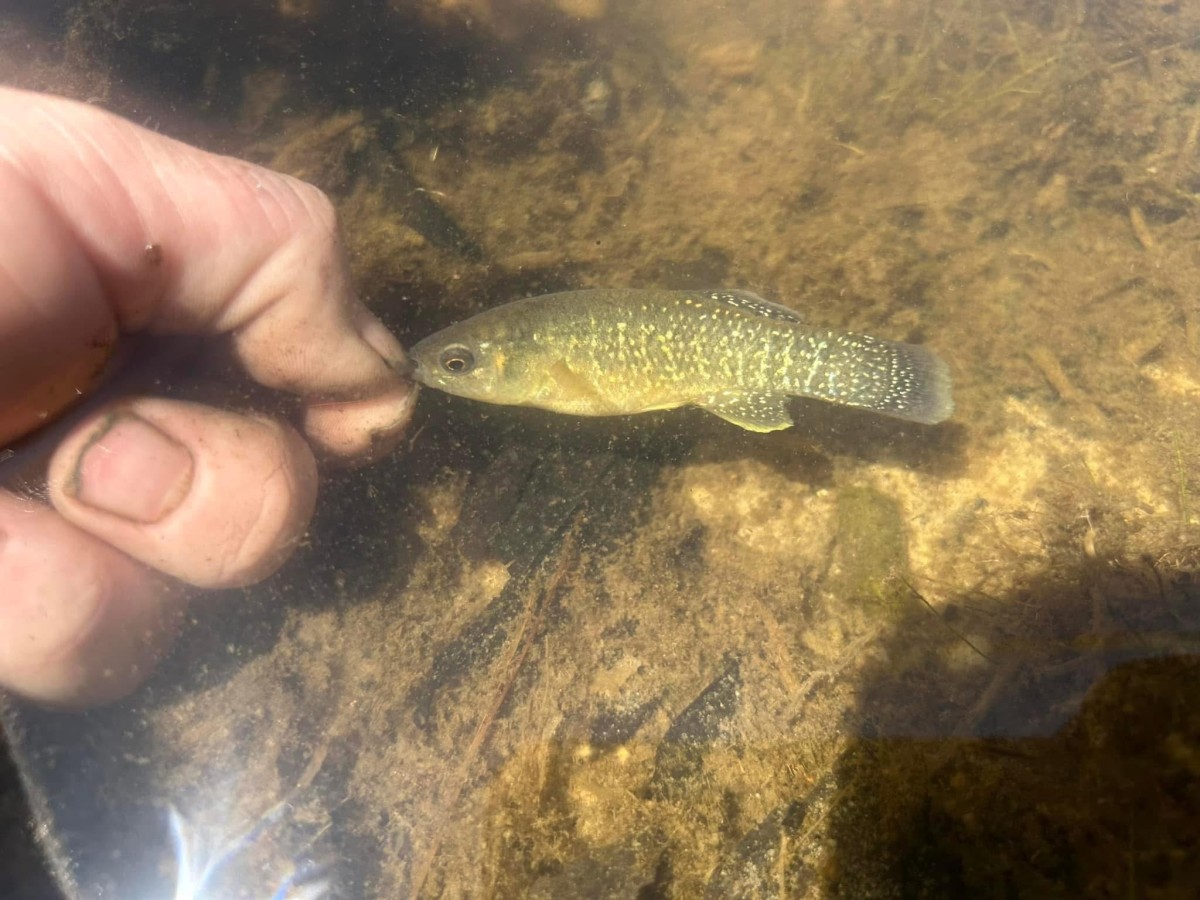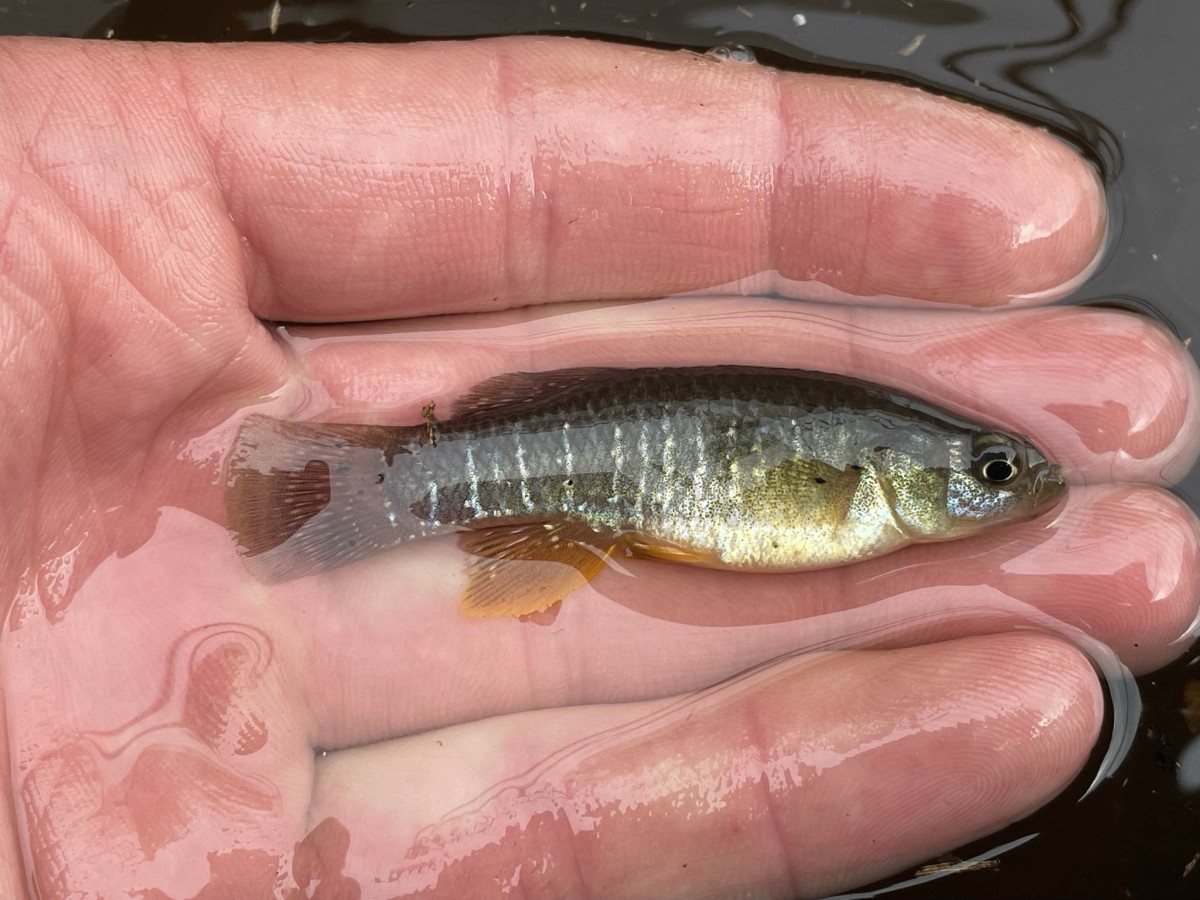Mummichog
(Fundulus heteroclitus)

Classification
General data
The mummichog (Fundulus heteroclitus) is a small killifish found along the Atlantic coast of the United States and Canada. Also known as Atlantic killifish, mummies, gudgeons, and mud minnows, these fish inhabit brackish and coastal waters including estuaries and salt marshes. The species is noted for its hardiness and ability to tolerate highly variable salinity, temperature fluctuations from 6 to 35 °C (43 to 95 °F), very low oxygen levels (down to 1 mg/L), and heavily polluted ecosystems. As a result, the mummichog is a popular research subject in embryological, physiological, and toxicological studies. It is also the first fish ever sent to space, aboard Skylab in 1973.
This species ranges along the Atlantic coast of North America, from Gaspé Peninsula, Anticosti Island and Port au Port Bay in the north to northeastern Florida in the south. It is present on Sable Island, 175 km (109 mi) southeast of the closest point of mainland Nova Scotia in the Atlantic Ocean. The approximate geographical division between the two subspecies lies in New Jersey, Delaware and Virginia.
Introduced populations have become established on the Atlantic coast of Portugal and southwestern Spain, starting in the 1970s and some have now reached the western Mediterranean basin. There may also be introduced populations in Hawaii and the Philippines.
As bait fish, mummichogs are sometimes released in freshwater habitats, where they can survive, and there have been reports of individuals in New Hampshire ponds, as well as the upper Ohio River and Beaver River.
The mummichog is a common fish in coastal habitats such as salt marshes, muddy creeks, tidal channels, brackish estuaries, eelgrass or cordgrass beds, and sheltered shorelines. It can be found within coastal rivers but seldom beyond the head of tide. A few landlocked populations may exist in freshwater lakes close to shore, for example on Digby Neck, Nova Scotia.













